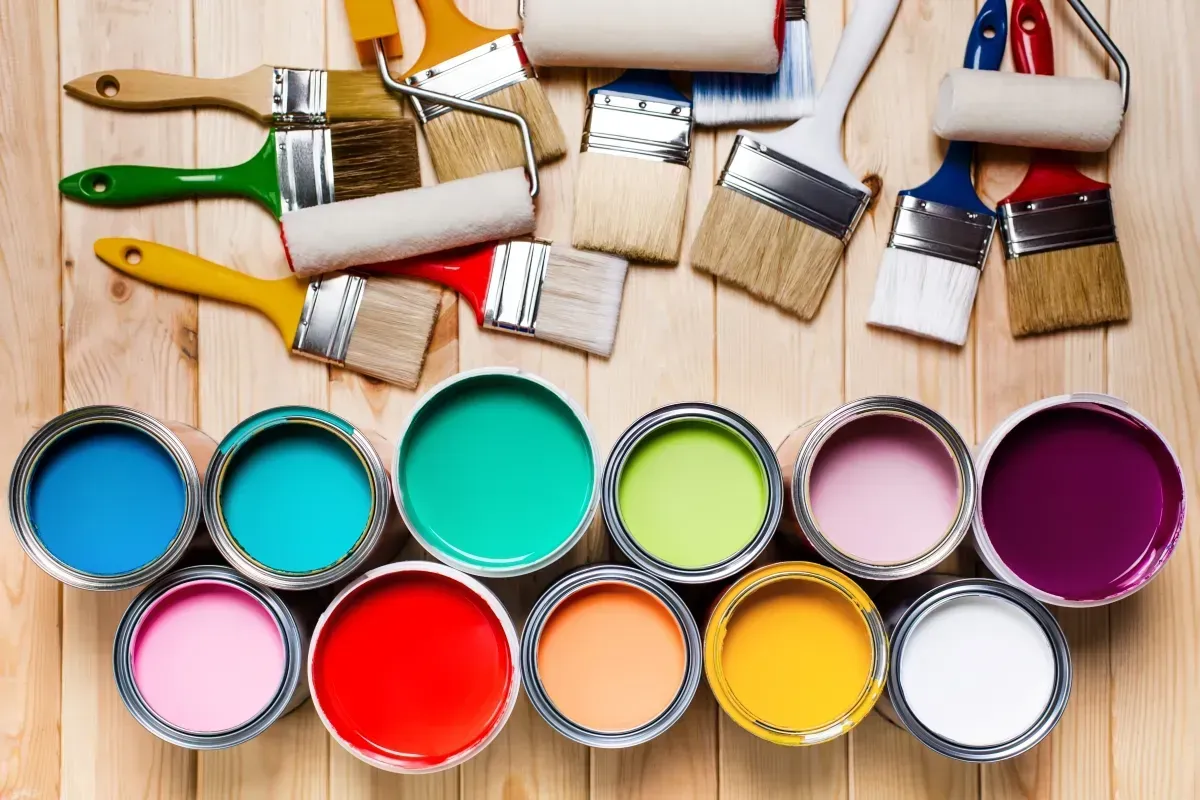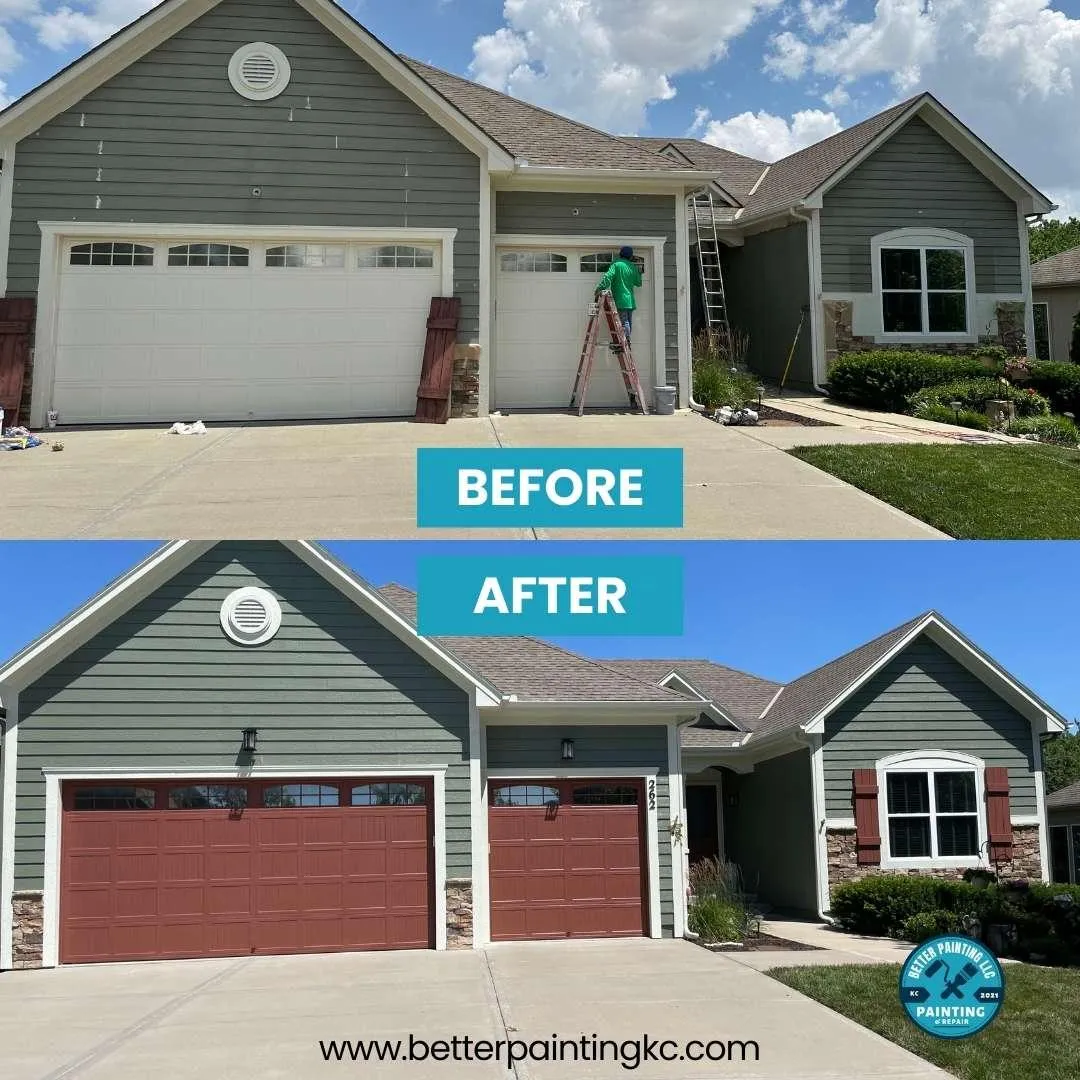
Exploring the Various Types of Exterior Paint: Which One is Right for You?
Choosing the right exterior paint for your home is more than just a cosmetic decision; it’s a critical factor that can greatly affect how your house looks and how well it withstands the elements. With so many options available, it can be daunting to figure out which paint type is the best fit for your needs. In this guide, we’ll walk you through the various types of exterior paint, discuss their benefits, and help you determine the right choice for your home. For additional insights, be sure to check out our previous post, "A Comprehensive Guide to Selecting the Right Paint for Your Exterior Repairs."
Why the Right Exterior Paint Matters
Selecting the appropriate exterior paint is essential for several reasons:
Protection Against Elements: High-quality exterior paint acts as a barrier, shielding your home from harsh weather, UV rays, and temperature changes. This protective layer prevents moisture from seeping in and causing damage.
Enhanced Aesthetics: A well-chosen color and finish can dramatically boost your home’s curb appeal, making it more inviting and attractive. A fresh coat of paint can truly transform your property’s overall look.
Cost-Effectiveness: While premium paints may come with a higher price tag, they often provide better longevity and require less maintenance, which can save you money over time.
Environmental Considerations: Many modern exterior paints are formulated with low volatile organic compounds (VOCs), making them safer for both your family and the environment.
Types of Exterior Paint
Understanding the different types of exterior paint is crucial when making your selection. Each type has unique characteristics suited for specific applications. Let’s dive into the most common types of exterior paint:
1. Acrylic Paint
Acrylic paint is a popular water-based option known for its versatility and durability. Here’s what makes it a go-to choice:
Quick Drying: One of the significant advantages of acrylic paint is its fast drying time, allowing you to complete your project sooner.
UV Resistant: This paint type is resistant to fading, making it ideal for homes in sunny climates.
Flexibility: Acrylic paint can expand and contract with temperature changes, which helps reduce the risk of cracking over time.
Easy Clean-Up: As a water-based product, acrylic paint is easy to clean up with soap and water.
Best Uses: Acrylic paint works well on a variety of surfaces, including wood, vinyl, and concrete, making it an excellent choice for exterior walls and trim.
2. Oil-Based Paint
Known for its durability and smooth finish, oil-based paint has long been a favorite for many homeowners. Here are some of its benefits:
Long-lasting: Oil-based paints are typically more resistant to wear and tear, making them perfect for high-traffic areas.
Rich Finish: They provide a glossy finish that enhances the look of trim and doors.
Excellent Adhesion: Oil-based paints adhere well to a variety of surfaces, ensuring a strong bond.
Best Uses: Oil-based paint is best suited for trim, doors, and windows, especially in areas where durability is crucial.
3. Latex Paint
Latex paint, another water-based option, is widely used for exterior applications because of its many advantages:
Easy Application: Latex paint is user-friendly and dries quickly, making it a favorite for DIY projects.
Low VOCs: Many latex paints are designed with low volatile organic compounds, making them a safer option for indoor and outdoor use.
Breathability: Latex paint allows moisture to escape from the underlying surface, reducing the risk of blistering.
Best Uses: Latex paint is ideal for most exterior surfaces, including wood, vinyl, and masonry.
4. Elastomeric Coatings
Elastomeric coatings are specialized paints designed for waterproofing and protecting surfaces. They are thicker than traditional paints and excel in moisture-prone areas:
Superior Flexibility: Elastomeric coatings can stretch and contract, making them ideal for surfaces that experience movement.
Waterproofing: These coatings create a waterproof barrier that protects against leaks and water damage.
Long-lasting: With proper application and maintenance, elastomeric paints can last up to 10 years or more.
Best Uses: Elastomeric coatings are perfect for flat roofs, concrete surfaces, and areas prone to moisture, such as basements.
5. Masonry Paint
Masonry paint is specifically formulated for porous surfaces like brick, concrete, and stucco. Here’s what you need to know:
Breathable: Masonry paint allows moisture to escape, preventing mold and mildew growth.
Durability: It is designed to withstand harsh weather conditions, making it highly durable.
Variety of Finishes: Available in various finishes, masonry paint can enhance the appearance of your surfaces while providing protection.
Best Uses: Masonry paint is ideal for exterior walls made of brick, stone, or stucco, ensuring a long-lasting and attractive finish.
Factors to Consider When Choosing Exterior Paint
When selecting the right paint for your home, several factors can influence your decision. Here are some essential considerations:
1. Surface Type
Different surfaces require specific types of paint for optimal adhesion and durability. Consider the following:
Wood: Acrylic or oil-based paints are ideal for wood surfaces. Acrylics offer flexibility, while oil-based paints provide a durable finish.
Vinyl Siding: Use specially formulated paints designed for vinyl siding to prevent warping and fading.
Concrete and Masonry: Choose breathable latex or elastomeric coatings for concrete and masonry surfaces to allow moisture to escape.
2. Climate and Weather Conditions
Your local climate can significantly impact paint performance. Consider the following:
Hot and Sunny Climates: In areas with intense sun, choose UV-resistant acrylic paints to prevent fading and damage.
Cold and Wet Climates: For colder regions, opt for paint that remains flexible in low temperatures and is resistant to moisture.
High Humidity Areas: In humid climates, consider using mold-resistant paints to prevent the growth of mildew and algae.
3. Desired Finish
The finish of your paint can affect both appearance and durability. Common finishes include:
Flat/Matt: Best for hiding imperfections but not as durable. Ideal for areas that don’t require frequent cleaning.
Satin: Offers a slight sheen and is more washable than flat finishes, making it great for siding and trim.
Semi-Gloss: Provides a shiny finish, perfect for trim, doors, and areas requiring durability.
Gloss: Offers a highly reflective finish, making it suitable for high-traffic areas, but may highlight imperfections more easily.
4. Color Selection
Choosing the right color can enhance your home’s exterior. Here are some tips to guide you:
Neighborhood Trends: Look at the colors of neighboring homes to ensure your choice complements the overall aesthetic of the area.
Architectural Style: Choose colors that align with your home’s architectural style. Traditional homes may benefit from classic colors, while modern homes can experiment with bold hues.
Test a Small Area: Before making a final decision, test paint swatches on a small area of the surface. Observe how the color looks in different lighting conditions throughout the day.
Common Mistakes to Avoid When Choosing Exterior Paint
When exploring the various types of exterior paint, it’s easy to make mistakes. Here are some common pitfalls to avoid:
Neglecting Surface Preparation: Properly cleaning and preparing the surface is crucial for a successful paint application. Skipping these steps can lead to poor adhesion and uneven results.
Choosing the Wrong Paint Type: Not all paints are suitable for every surface. Make sure to select a product that matches the surface material for optimal performance.
Ignoring Weather Conditions: Sealing and painting in extreme temperatures or wet conditions can affect the paint’s performance. Always check the weather forecast before starting your project.
Rushing the Process: Take your time during the selection and application process. Rushing can lead to mistakes and unsatisfactory results.
Not Considering Maintenance: Choose paints that are easy to clean and maintain, especially for high-traffic areas.
Preparing Surfaces for Painting: A Step-by-Step Guide
Proper preparation is essential for achieving optimal results when painting exterior surfaces. Follow these steps for effective preparation:
Step 1: Clean the Surface
Start by cleaning the surface to remove dirt, grime, and mildew that can hinder paint adhesion. Use a pressure washer or a scrub brush with a concrete cleaner to thoroughly clean the area. Make sure the surface is completely dry before moving on.
Step 2: Repair Damage
Inspect your surfaces for any damage, including cracks, holes, or rotting wood. Use a patching compound or wood filler to repair any imperfections. Allow repairs to cure as per the manufacturer's guidelines.
Step 3: Sand the Surface
For previously painted surfaces, lightly sand the area to promote better adhesion. Use sandpaper or a power sander to create a smooth, even surface. Remove any dust and debris after sanding.
Step 4: Apply Primer
In many cases, applying a primer is beneficial, especially for raw or repaired surfaces. Choose a primer that suits the surface type (e.g., wood, masonry) and apply it evenly. Allow it to dry according to the manufacturer’s instructions.
Maintenance Tips for Painted Exteriors
To keep your exterior paint looking great, follow these maintenance tips:
Regular Cleaning: Sweep and wash your painted surfaces regularly to remove dirt and debris. Use a soft brush or sponge with mild detergent for cleaning.
Inspect for Damage: Periodically check for signs of wear, such as fading, peeling, or cracking. Address any issues promptly to prevent further deterioration.
Repaint as Needed: Depending on the quality of the paint and exposure to elements, consider repainting every 5-10 years or as necessary.
Touch Up Scratches: For minor scratches or scuffs, use touch-up paint to maintain the appearance of your exterior.
Why Choose Better Painting LLC?
At Better Painting LLC, we know that selecting the right paint for your exterior repairs is crucial. Here’s why you should choose our team for your painting needs:
Expert Guidance: Our knowledgeable staff can help you select the perfect paint for your specific needs and preferences.
Quality Products: We use only the best products on the market, ensuring a long-lasting finish that protects your home from the elements.
Professional Application: Our skilled painters deliver exceptional workmanship, ensuring your exterior repairs are done right.
Customer Satisfaction: Your satisfaction is our top priority. We strive to exceed your expectations with every project.
Conclusion
Exploring the various types of exterior paint is essential for making informed decisions about your home’s exterior. By understanding the different types of paint, considering key factors, and following proper preparation and maintenance techniques, you can achieve stunning results that stand the test of time. For expert assistance with your exterior painting needs, contact Better Painting LLC today. Let us help you transform your space with quality paints and professional application!
Contact us at Better Painting LLC to learn more:
Better Painting LLC
Email: [email protected]
Phone : 913-263-7554










